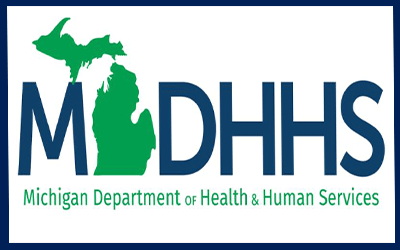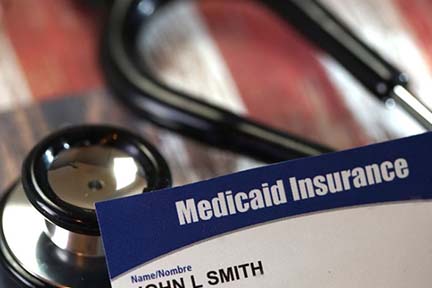
by orionontv | Mar 1, 2023 | Health and Wellness
|
Press Release
FOR IMMEDIATE RELEASE: March 1, 2023
CONTACT: Chelsea Wuth, 517-241-2112, [email protected]
MDHHS highlights brain injury prevention during Brain Injury Awareness Month
LANSING, Mich. — Traumatic brain injury (TBI) and acquired brain injury (ABI) are leading causes of injury-related death and disability in the United States and in Michigan. The Michigan Department of Health and Human Services (MDHHS) is observing Brain Injury Awareness Month this March to raise awareness about prevention of brain injuries.
“Prevention strategies can greatly reduce the risk for TBIs and death,” said Dr. Natasha Bagdasarian, MDHHS chief medical executive. “These include removing hazards in and around the home, keeping sports play safe by using protective equipment, avoiding driving in bad weather if possible, always wearing a seat belt and making sure children are secured in an age- and weight-appropriate child seat or booster seat in the car.”
Brain injuries may affect cognitive, motor, sensation and emotional functions. Observable signs of traumatic brain injury may include appearing dazed or stunned, forgetting an instruction, moving clumsily, answering questions slowly, losing consciousness (even briefly), showing mood, behavior or personality changes, and being unable to recall events prior to and/or after an injury event.
Falls are the leading known cause of TBI (40%) in the United States, and cause more than half (55%) of all TBIs among children ages 0 to 14 years, and 81% of all TBIs are among adults ages 65 and older. Other leading and preventable causes of traumatic brain injury include being struck by or against an object or person, motor vehicle crashes, suicide, substance misuse and assaults, including shaken baby or abusive head trauma.
There were more than 1,800 TBI-related injuries in 2020 and more than 9,500 hospitalizations in Michigan. Annual costs of TBIs in the U.S. exceeds $40 billion.
For more tips on preventing TBIs, visit CDC.gov.
For more tips to keep your home safe, visit CPSC.gov, and Safekids.org.
More information about sports concussions is available here.
Additional resources for seniors for classes to prevent falls and improve mobility and independence may be found at CDC.go/steadi. |

by orionontv | Feb 23, 2023 | Health and Wellness

FOR IMMEDIATE RELEASE: Feb. 23, 2023
MEDIA CONTACT: Bob Wheaton, 517-241-2112, WheatonB@michigan.gov
MDHHS seeking proposals for new contracts to focus on behavioral health needs of children in foster care, juvenile justice
LANSING, Mich. – The Michigan Department of Health and Human Services (MDHHS) is requesting proposals from residential facilities that can meet the behavioral health needs of children in the foster care and juvenile justice systems.
The request for proposals – issued this week – is part of the department’s efforts to expand access to services to youth who are experiencing a behavioral health crisis.
MDHHS is asking congregate care providers to submit plans for placement in their facilities to address the needs of youth who must access therapeutic treatment programs – meaning services to stabilize and treat youth dealing with serious mental health concerns, like suicidal thoughts.
The department issued a similar request for proposals in November. The new request includes further clarifications and some changes to the requirements that are meant to enable additional congregate care facilities to take advantage of the opportunity. For example, the new request for proposal provides new congregate care facilities with the time needed to become licensed.
The idea of the new contract model being used for congregate care is to encourage greater innovation in caring for the unique needs of children in the state’s foster care and juvenile justice systems.
This effort is part of a multi-faceted approach by MDHHS to address a national need for expanded behavioral health services for youth. The demand is coupled with a nationwide staffing shortage that makes it difficult to provide needed services, which MDHHS is also addressing.
MDHHS contracts with child-caring institutions to provide specialized treatment to youth in foster care or the juvenile justice system. In recent years it has been challenging in Michigan and nationally to find foster care and juvenile justice placements – especially residential therapeutic treatment beds.
To earn state contracts, facilities must demonstrate through the request for proposal process that they can meet the specialized needs of children.
Agencies that would like to submit a proposal should go to the “Child Caring Institution – Therapeutic Short-Term Treatment Program” Bid Number 230000001297-1 at www.michigan.gov/SIGMAVSS after registering on that website. For assistance with registration or navigating the site, contact the Office of Financial Management at 517-284-0540 or 888-734-9749 and press “1” on the automated menu, or email [email protected]. Vendors who intend to submit a proposal and have questions should contact the solicitation manager, Mary Ostrowski, at 517-249-0438 or [email protected]. |

by orionontv | Feb 23, 2023 | Health and Wellness
|
Press Release
FOR IMMEDIATE RELEASE: Feb. 23, 2023
CONTACT: Lynn Sutfin, 517-241-2112, SutfinL1@michigan.gov
MDHHS requesting proposals to expand weatherization assistance program
LANSING, Mich. – The Michigan Department of Health and Human Services (MDHHS) has issued a Request for Proposal (RFP) to expand the weatherization assistance program utilizing bipartisan infrastructure law funding for multi-family dwellings.
The program provides energy conservation and related health and safety services for eligible low-income households at no cost to the resident. MDHHS contracts with local weatherization operators (LWO) across the state. Each LWO provides services to a designated area, ensuring all counties in Michigan can benefit from this energy-saving program.
Eligible applicants must meet the following criteria:
- Be an established non-profit entity.
- Demonstrate experience implementing weatherization, residential energy efficiency and health and safety remediation programs for multifamily properties.
- Demonstrate the ability to serve the entire territory.
- Be certified as a Lead Renovation Repair and Painting firm with the U.S. Environmental Protection Agency at the time of application.
- Have a Building Performance Institute-certified Quality Control Inspector/Energy Auditor for multifamily projects on staff.
- Demonstrate knowledge of Weatherization Assistance Program State Plans.
- Have qualified staff or contractors responsible for performing the services, including energy audits and quality assurance inspections.
The five-month award begins on May 1 and ends Sept. 30, 2023, with the total available amount being $1 million dollars. Successful applicants may be awarded funding annually through at least Sept. 30, 2028, based upon funding availability and acceptable performance.
A pre-application conference will be held to discuss this funding opportunity and provide instruction on using the EGrAMS system. The pre-application conference will be held Monday, Feb. 27 at 1 p.m. and will last approximately 90 minutes. The conference can be accessed at https://bit.ly/3lErn6p.
Grant applications for the Department of Energy Bipartisan Infrastructure Law Weatherization Expansion-2023 RFP must be submitted electronically through the EGrAMS program by 3 p.m. March 22.
For more information or to apply, visit the EGrAMS website and select “About EGrAMS” link in the left panel to access the “Competitive Application Instructions” training manual. The complete RFP can be accessed under the ‘Current Grants’ section under the “Community Action & Economic Opportunity” link and selecting the “DEWAP-2023” grant program. |

by orionontv | Feb 23, 2023 | Health and Wellness
|
Press Release
FOR IMMEDIATE RELEASE: Feb. 23, 2023
CONTACT: Chelsea Wuth, 517-241-2112, [email protected]
MDHHS reports first influenza-associated pediatric death in Michigan this season
Michigan residents ages six months and older eligible for flu vaccine
LANSING, Mich. – The Michigan Department of Health and Human Services (MDHHS) has confirmed the first influenza-associated pediatric death in Michigan for the 2022-2023 flu season.
The reported death involves a child from Ingham County who contracted Influenza A/H3. Nationally, there have been at least 111 influenza-associated pediatric deaths reported during the current flu season.
“It’s not too late to get the flu vaccine,” said Dr. Natasha Bagdasarian, chief medical executive for MDHHS. “Once children reach six months of age it is recommended they receive two doses of the flu vaccine for their first series. In addition, pregnant women should get the flu vaccine during each pregnancy. Flu vaccine can be given at the same time as other vaccines, including the COVID-19 vaccine.”
Each year, influenza claims the lives of children across the United States. MDHHS continues to strongly recommend that everyone six months of age and older get a seasonal flu vaccine. Flu can be serious and lead to severe illness and hospitalizations. Flu vaccine is the best way to prevent getting the flu and can also reduce the severity of flu illness.
The Centers for Disease Control and Prevention estimates that since October there have been at least 25-51 million flu illnesses, 12-25 million flu medical visits, 280,000-630,000 flu hospitalizations and 18,000-56,000 deaths nationally.
Most positive influenza specimens confirmed by the MDHHS Bureau of Laboratories this flu season have been Influenza A/H3 virus. This virus can cause severe flu infections in children, as well as in adults. The H3N2 strain is a component of the 2022-2023 seasonal flu vaccine so getting vaccinated provides extra protection.
The influenza vaccine is especially important for persons at increased risk for complications from flu, including children, adults aged 65 years and older, persons of any age with underlying medical conditions and pregnant women. Early estimates from Canada suggest vaccination reduces the risk of influenza associated medical visits by 54% this season. Children less than six months of age are too young to be vaccinated and need to be protected by vaccination of their close contacts, including parents, siblings, grandparents, childcare workers and health care personnel. In addition to vaccination, early treatment with an antiviral drug can help prevent flu infections from becoming more severe. Check with your doctor promptly if you are at higher risk of serious flu complications and you get flu symptoms.
Currently, for the 2022-2023 flu season, only 33% of Michigan residents have been vaccinated against flu. According to data from the Michigan Care Improvement Registry, flu vaccine coverage among children ages six months through 17 years is more than 3% lower for the 2022-2023 flu season (18.8%) compared to the 2021-2022 flu season (22.2%).
To find flu vaccine near you, call your health care provider, local health department or visit Vaccines.gov.
For more information about the flu, visit Michigan.gov/flu. |

by orionontv | Feb 22, 2023 | Health and Wellness

FOR IMMEDIATE RELEASE: Feb. 21, 2023
MEDIA CONTACT: Bob Wheaton, 517-241-2112, WheatonB@michigan.gov
MDHHS seeking bids for next phase to update child welfare information system
LANSING, Mich. – The Michigan Department of Health and Human Services (MDHHS) is continuing to improve its technology to better serve children, youth and families while accessing enhanced data to assess the performance of the state’s child welfare system.
MDHHS is now seeking bids for the next phase to replace its child welfare information system with a more modern system by issuing a request for proposals.
The department is replacing the Michigan Statewide Automated Child Welfare Information System (MiSACWIS) in a phased approach. As the existing system is replaced, the other portions of MiSACWIS will continue to be used.
MDHHS has already implemented the first phase of a Comprehensive Child Welfare Information System (CCWIS) that includes functions related to licensing of child welfare agencies, residential facilities and foster homes, and the Michigan Foster Care Portal.
“This new system will allow MDHHS to better access data regarding children who have been abused and neglected,” said Demetrius Starling, senior deputy director of the MDHHS Children’s Services Administration. “That will allow us to provide improved services to children and families.”
To replace MiSACWIS and implement the new system, MDHHS has completed several assessments, conducted research and consulted with other states and federal partners.
The phased approach is consistent with modern best practice for technology development and will increase the reliability of the system while reducing costs for development and operations.
Federally funded child welfare systems were previously required to collect and submit data through SACWIS systems. The federal government is now requiring states to move to the modernized CCWIS to receive full federal funding. Approximately 50 percent of the cost of the new system will be paid for with federal dollars.
Proposals can be submitted on the State of Michigan vendor self-service site. Bidders or the public can view the request for proposal either by creating a user profile on the site or using the guest access button and entering “child welfare” in the search bar.
Proposals must be submitted no later than 11:59 a.m., EST, Friday, April 7. MDHHS hopes to kick off the next phase of the project in October 2023.

by orionontv | Feb 15, 2023 | Health and Wellness

Note: This is being re-sent to correct the date of the release.
FOR IMMEDIATE RELEASE: Feb. 15, 2023
MEDIA CONTACT: Bob Wheaton, 517-241-2112, WheatonB@michigan.gov
Michigan provides Medicaid enrollees with information about options as eligibility requirements restart following recent federal legislation
Eligibility redetermination packets to start being mailed to beneficiaries depending on renewal date
LANSING, Mich. – Medicaid beneficiaries will have to renew their coverage this year, starting in June, as Michigan resumes Medicaid eligibility redeterminations to comply with federal legislation.
During the federal COVID-19 Public Health Emergency, Congress enacted the Families First Coronavirus Response Act that required state Medicaid agencies continue health care coverage for all medical assistance programs, even if someone’s eligibility changed. Michigan’s Medicaid caseload grew by more than 700,000 people during the public health emergency. This requirement was ended by the federal Consolidated Appropriations Act of 2023 signed Dec. 29, 2022.
Michiganders who no longer qualify for Medicaid will receive additional information about other affordable health coverage options available, including on HealthCare.gov. Affected Michiganders will be able to shop for and enroll in comprehensive health insurance as they transition away from Medicaid, and many Michiganders can purchase a plan for less than $10 per month.
Renewals for traditional Medicaid and the Healthy Michigan Plan will take place monthly starting in June 2023 and run through May 2024. Monthly renewal notices will be sent three months prior to a beneficiaries’ renewal date starting with June renewal dates. Beneficiaries can check their renewal month at www.michigan.gov/MIBridges.
“MDHHS is strongly committed to ensuring Michiganders who are eligible for Medicaid coverage remain enrolled,” said Elizabeth Hertel, Michigan Department of Health and Human Services director. “More than three million Michiganders, including one million Healthy Michigan enrollees, have benefitted from keeping their Medicaid coverage without redeterminations on eligibility during the COVID-19 pandemic. MDHHS is preparing to assist residents who will be affected by changes in their coverage.”
Here is what Michigan Medicaid beneficiaries need to do to prepare:
- Make sure your address, phone number and email address are up to date at www.michigan.gov/MIBridges. You can also call your local MDHHS office. If you do not have an online account for MI Bridges to access your Medicaid case or report changes, visit www.michigan.gov/MIBridges to sign up for an account. You can also locate organizations that can help you by searching for community partners.
- Report any changes to your household or income. You can report changes at www.michigan.gov/MIBridges or by calling your local MDHHS office.
- If you get a renewal packet, be sure to fill it out, sign the forms and return it by the due date with any proof needed. NOTE: If you do not complete and return the renewal, you may lose Medicaid coverage.
“The Michigan Department of Insurance and Financial Services (DIFS) is committed to working with MDHHS and our partners nationwide to help impacted Michiganders get the affordable, comprehensive health insurance they need,” said DIFS Director Anita Fox. “DIFS stands ready to answer questions about purchasing a health insurance plan. Call DIFS at 877-999-6442, Monday through Friday from 8 a.m. to 5 p.m. or visit Michigan.gov/HealthInsurance to learn more.”
To ensure beneficiaries are aware of upcoming federal redetermination requirements and help them keep their coverage if eligible, MDHHS is launching a multi-media advertising campaign. This will include radio, audio streaming, outdoor, mobile and social media ads, including minority media outlets and stakeholder communications.
More information about the how benefits connected to the COVID-19 Public Health Emergency are changing can be found at www.Michigan.gov/2023BenefitChanges. |





